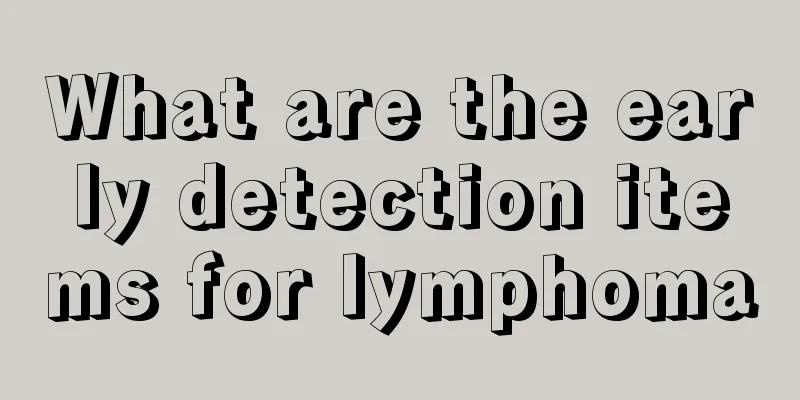Is molecular targeted therapy effective for liver cancer? Introducing traditional Chinese medicine treatments for liver cancer

|
Traditional Chinese Medicine Treatment Methods for Liver Cancer One of the characteristics of tumor treatment in my country is the combination of traditional Chinese medicine and western medicine. Traditional Chinese medicine in the treatment of liver cancer emphasizes overall regulation, distinguishing between the prevalence of pathogenic factors and the deficiency of the body's health and treating it accordingly. As a method of comprehensive treatment, it is used in conjunction with surgery, radiotherapy, and chemotherapy. 1. Indications of Traditional Chinese Medicine (1) Patients with advanced liver cancer who are unable to undergo surgery, radiotherapy or chemotherapy. (2) Elderly patients with liver cancer or patients with severe liver cirrhosis who cannot tolerate surgery, radiotherapy and chemotherapy. (3) As an adjuvant treatment measure for surgery, radiotherapy, and chemotherapy. 2. The following treatment methods are commonly used in clinical practice: syndrome differentiation and addition and subtraction (1) Strengthening the spleen and replenishing qi: Suitable for those who are tired and weak, have weak pulse, thin tongue coating, and tongue that is not red. Ginseng (or Codonopsis), Chinese angelica, Atractylodes macrocephala, Yun Fuling, etc. can be used. (2) Qi-tonifying and blood-replenishing method: Suitable for anemia or blood loss, with sallow complexion, pale lips and nails, dizziness and weakness, pale tongue, and weak pulse. Astragalus, Chinese angelica, wolfberry, and agrimony can be used. (3) Qi-regulating and digestion-promoting method: It is suitable for chest and flank distension, abdominal distension, distension after eating, poor appetite, or as an auxiliary treatment for ascites. It can be used with Radix Rehmanniae Preparata, Radix Paeoniae Alba, Fructus Aurantii Immaturus, Rhizoma Magnoliae Bark, Rhizoma Citri Reticulatae, Radix Linderae, Radix Achyranthis Bidentatae, Rhizoma Dalbergiae, Rhizoma Cibotii, Ganoderma Lucidum ... (4) Heat-clearing and detoxifying method: Suitable for jaundice or patients with heat syndrome, red tongue, yellow and greasy tongue coating, slippery and rapid pulse. Chen, coix seed, white flower hedyotis diffusa, barbata, tianjihuang, polygonum cuspidatum root, etc. can be used. (5) Blood circulation and stasis removal method: Suitable for patients with typical blood stasis such as liver pain and ecchymosis on the tongue. Curcuma zedoaria, raw pollen, peach, corydalis, turmeric, etc. can be used. Be careful when using it for patients with bleeding tendency and advanced liver cancer. (6) Softening and dispersing method: Suitable for patients with lumps in the liver area. It can be used with mountain aconite, roasted turtle shell, Zhejiang Fritillary Bulb, pangolin, etc. (7) The following prescriptions are often used during chemotherapy and radiotherapy for liver cancer. 1) Liujunzi Decoction (dried tangerine peel, pinellia tuber, poria cocos, codonopsis pilosula, atractylodes macrocephala, licorice) is often used during chemotherapy to quickly help invigorate the body and harmonize the stomach, and reduce turbidity. 2) Conditioning after chemotherapy: Use the self-prepared chemotherapy decoction, which mainly includes astragalus, ginseng, white atractylodes, tangerine peel, pinellia, typhoon, amomum, Jiao Sanxian, and coptis. 3) When the white blood cell count is low: use self-made Xueling Granules, the main ingredients of which are: Polygonum multiflorum, Polygonatum sibiricum, Cuscuta australis, Astragalus, Angelica sinensis, Ginseng, Millettia reticulata, Placenta, Rehmannia glutinosa, and Ligusticum chuanxiong. 4) Low platelet count: You can use Yiban Decoction (self-made), the main ingredients are: small thistle, Imperata root, Agrimoniae, Millettia repens, jujube, angelica, Rheum officinale, and Wisteria vine. 5) During radiotherapy: Radiation Lizhong Decoction can be added, which includes Atractylodes macrocephala, Poria cocos, Chinese yam, Coix seed, Citrus aurantium, Curcuma aromatica, Magnolia officinalis, Cyperus rotundus, Taraxacum mongolicum, Coptis chinensis, Rhizoma Anemarrhenae, and Paeonia suffruticosa. How effective is molecular targeted therapy for liver cancer? Several molecular targeted therapy drugs have been shown in clinical trials to have disease control effects on some hepatocellular carcinomas. The so-called molecular targeted therapy refers to targeting key macromolecules in the occurrence and development of cancer and tumors, controlling their gene expression and changing their biological behavior by specifically blocking the signal transduction of cancer and tumor cells, or by strongly preventing the growth and proliferation of cancer and tumor blood vessels, thereby exerting an anti-cancer effect. Unlike traditional chemotherapy drugs, molecular targeted therapy is specific to tumor targets. While exerting anti-tumor activity, it has fewer toxic side effects on normal cells. At present, the commonly used molecular targeted therapeutic drugs in clinical practice mainly include: targeted drugs acting on epidermal growth factor receptors, such as monoclonal antibodies (such as cetuximab, nimotuzumab, etc.) and small molecule compounds (such as gefitinib, erlotinib, etc.); anti-angiogenic preparations, such as bevacizumab targeting vascular endothelial growth factor, have shown certain effects; multikinase inhibitors mainly include sorafenib (Nexavar), which has been shown to significantly prolong the overall survival of patients with advanced primary liver cancer. It has been approved for formal clinical use in the treatment of advanced hepatocellular carcinoma in Europe, the United States and my country. As an important means of comprehensive treatment and an emerging treatment model, molecular targeted therapy has received increasing attention in clinical practice. |
>>: How to diagnose early lung cancer? There are two aspects to diagnose lung metastasis
Recommend
Dimethyl sulfoxide
Many people think that dimethyl sulfoxide is a ma...
The process of autologous fat chin augmentation turns out to be like this
Autologous fat chin augmentation is a popular pla...
Why does my right side of my abdomen hurt when I bend over?
The body is a complex organism with various sense...
What can you eat to prevent liver cancer? Eating three kinds of bamboo shoots regularly is effective in preventing liver cancer.
For liver cancer, prevention is far more importan...
What are some good drugs for vaginal tightening
As modern people's minds gradually open up, t...
The hazards of hair conditioner
Women are very caring about their hair. Sometimes...
What kind of water can cause liver cancer? To prevent liver cancer, don't eat these things
Nowadays, liver cancer and other cancers are freq...
How to use eyeliner
Eyeliner is very common. There are some ways and ...
How to remove blood stains from a cool mat
In summer, many people prefer to sleep on a cool ...
A brief discussion on the symptoms of osteosarcoma
Nowadays, more and more young people are sufferin...
How to treat liver cancer in its early stages? Is liver cancer detected during physical examination serious?
Cancer is something everyone fears, and it can be...
Can normal people take aphrodisiacs?
For male friends, as they get older, physical pro...
Can aloe vera gel remove fat particles? Dissecting the true effect of super glue
Eyes are the windows to people's souls. When ...
Prevention of lung cancer should start with quitting smoking
What is the cause of lung cancer? Why are more an...
Let’s take a look at the factors that cause gastric cancer
Gastric cancer is a relatively serious disease wi...









